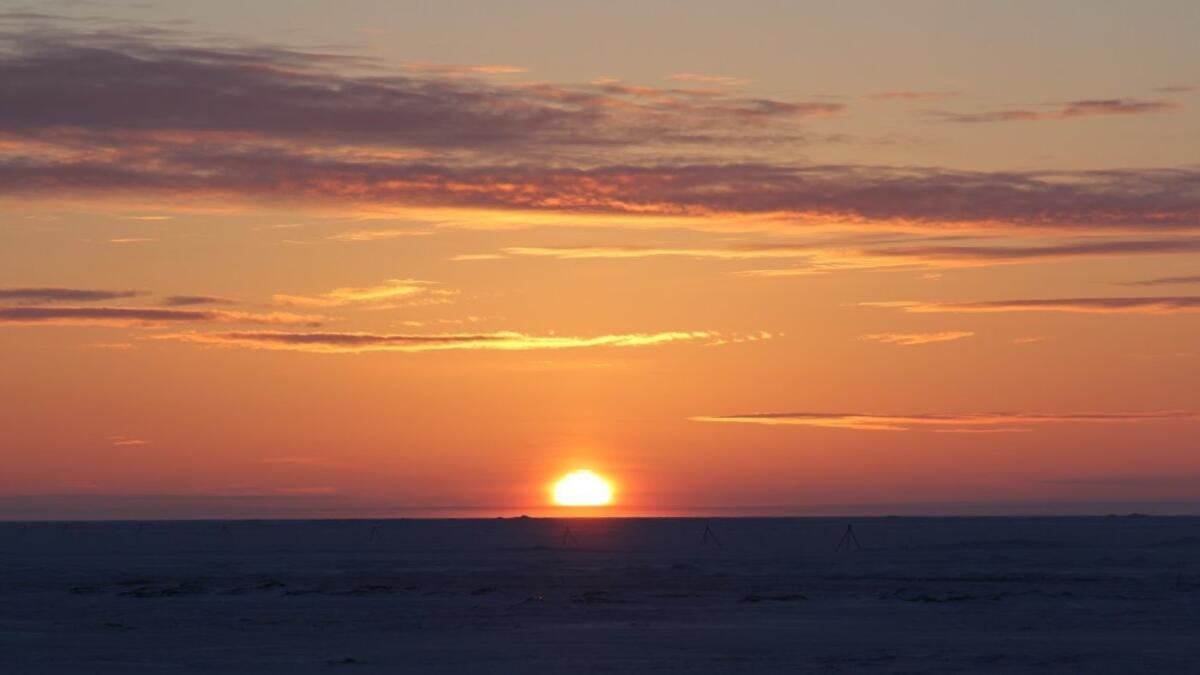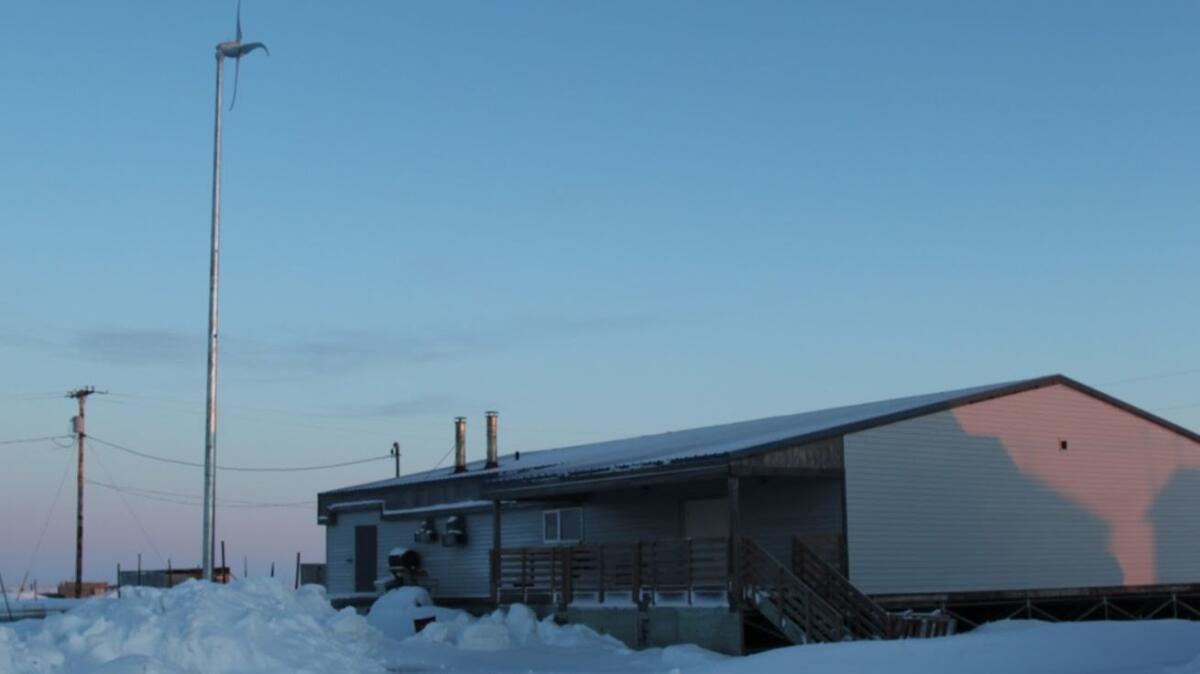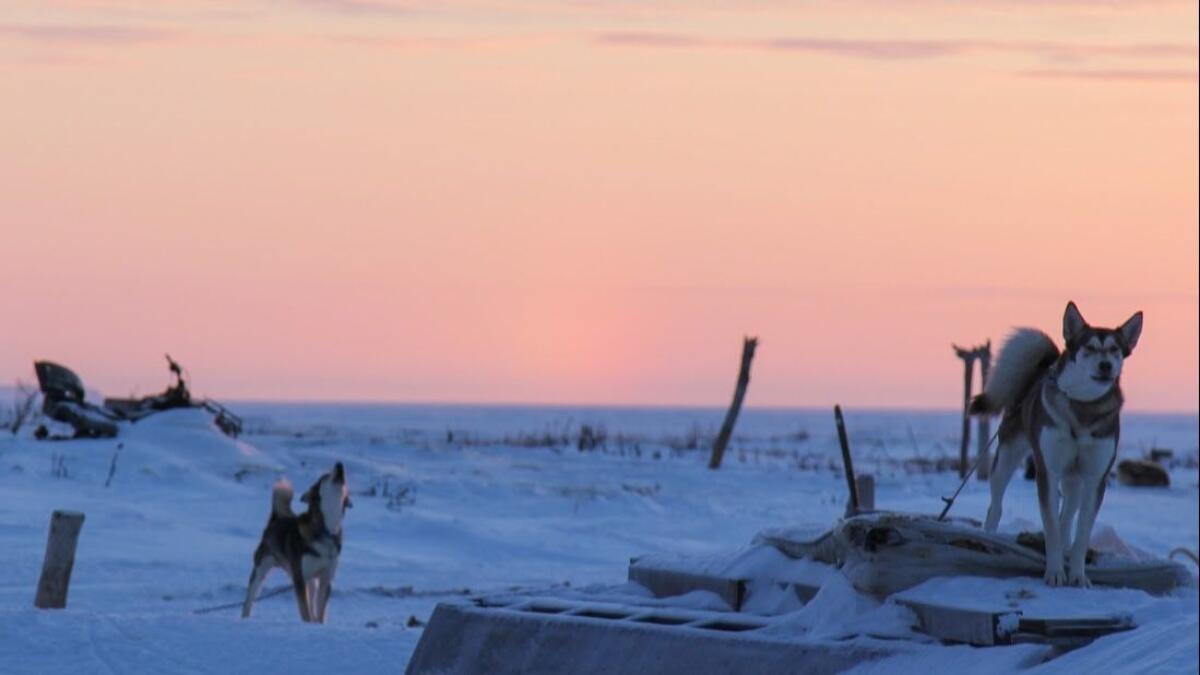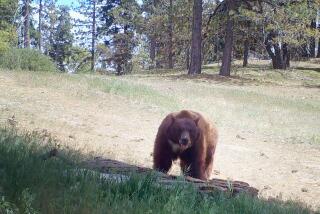Tanning seal hides on the edge of the world: A foothold in the global economy in rural Alaska

When a fresh seal is brought in, it first has to be invoiced.
“They come in and drop the seals off here,” explained Dennis Sinnok, his gloved hands resting on a waist-high wooden table in the dim front room of a business like no other, housed in one of the most remote corners of Alaska.
Sinnok is 49 years old, mustachioed with a mellow demeanor that suggests he’d rather be out hunting. He manages the Shishmaref Tannery for the village’s federally recognized tribal council. The tannery is the only operation of its kind in Alaska, and although it operates only three months a year and is unlikely to create widespread prosperity, it brings a little extra cash for the residents of this Inupiaq village at the edge of the Chukchi Sea.
The business first opened in the ’80s as a novel economic development project to capitalize on byproducts from the traditional subsistence hunting Alaska Natives have practiced for millennia. This tiny tannery and its uneven history — from success to failure to a current attempt at revival — reflects the endemic difficulties that riddle Alaska’s uniquely rural economy.
“This is the work area,” Sinnok said, gesturing generally toward undistinguished equipment for taking the raw hides of marine mammals and turning them into slippers, gloves and hats. At the start of each transaction his employees will count how many seals were brought in, note what kind they are (ringed, spotted, ribbon), and mark an ID number on the hide.
Behind Sinnok were the wooden tanks where hides sit and brine for days at a time. The wall nearby was streaked with a greasy yellow splatter kicked up by what look like mounted circular saws.
“These are fleshing machines,” Sinnok explained matter-of-factly. “It fleshes the fat right off of the seal.”

The tannery is a bridge between the local subsistence economy and what many in Alaska refer to generally as the “cash economy,” the expanding constellation of goods and services that can only be provided through currency or credit. Both of which are in short supply for communities like Shishmaref, a village of about 600 residents.
The village has just a handful of paying jobs, but sky-high costs for even the most basic groceries. Utilities are expensive, if they exist at all. Shishmaref lacks basic plumbing for sewage and potable water. At one of the village’s two stores, a gallon of drinking water costs $11.
Demand for the tannery’s services was so great during the last brief season — from October to January — that the business had to set a limit, accepting just 10 hides from each family involved.
“We did 850 seals in three months,” Sinnok said. “That is the most I’ve ever seen them do.”
All around the squat one-story building are signs of just how hard it is operating a business hundreds of miles from the nearest road and best reached by a small bush plane. The tannery’s ceilings are extra low to cut down on heating costs. There is a small wind turbine outside to add supplemental power. In a backroom are the giant wooden drums that spin the hides dry as a last step in the tanning. Next to them are bulky bags of sawdust shipped up from the Lower 48. Sinnok buys each bag at $10.11, but by the time it’s been freighted all the way to Shishmaref the per-bag cost is $70.
Salt, which they also use in quantity, is cheaper.
“We get that from Costco,” Sinnok said.
Like much of western Alaska, Shishmaref’s lack of infrastructure hinders economic development. Sitting at his kitchen table earlier in the day, Sinnok fretted about a check he mailed to his bank that still had not cleared. Mobile deposits aren’t an option because the tannery has no internet, an expensive utility here that would cut into the business’ bottom line. To get water for brining, Sinnok hauls a 200-gallon tank attached to a four-wheel ATV from the Washeteria, the community building that houses showers, washing machines, and spigots for filling personal buckets.
“It would be a lot easier if we had running water here,” he said.
The Village Council spent about $30,000 to restart the tannery and broke even on the investment. But making a profit wasn’t the point. By processing seal hides at a commercial scale, the village has been able to sell tanned skins back to hunters and their families for use as raw material in handicrafts and clothing sold around Alaska.
“This is a Shishmaref slipper,” crowed 65-year-old Percy Nayokpuk, holding up a single slip-on shoe made of shimmering gray seal skin with black beaver trim and blue beadwork.
Since 1990 Nayokpuk has run the general store his father opened in 1960. Slippers like these are sold in boutiques and at craft fairs across the state, but here they sit unceremoniously on a metal shelf by the door, just above a casually splayed wolf pelt and a few steps from walrus ivory earrings displayed next to the candy bars.
“Good slippers for up north, I tell you,” Nayokpuk added. “Don’t get no Crocs if you’re gonna live around here; get a pair of these.”
Nayokpuk hopes the tannery can help restore some of the economic self-determination rural Alaska has lost in recent decades as costs have risen and regulations expanded. He remembers the international fur market booming when he was a boy, giving hunters lucrative opportunities to sell raw skins to merchants and itinerant buyers.
“Seal skins were fetching $100 a skin in the ’60s,” Nayokpuk wistfully recalled.
That started to change after passage of the Marine Mammal Protection Act in 1972, which put new restrictions on Alaska Native subsistence hunters selling goods like raw walrus ivory, polar bear fur, and seal pelts to non-Natives. According to Nayokpuk, the change was huge because it all but eradicated one of the few ways local hunters could earn cash.

“I think as a result of this lack of income we see other problems that have surfaced,” Nayokpuk said, ticking off a number of social ills he’s seen metastasize during his lifetime: substance abuse, overcrowded homes, suicide.
“Young men were not able to go out and provide for themselves,” he said of the years since passage of the law.
Many of the challenges facing the tannery today are the same ones that were obstacles for Tony Weyiouanna back in the 1980s, when, as a young man, he tried figuring out how to get the original project up and running.
“From the time we started talking about it to when it opened the doors it probably was about four years,” Weyiouanna, 49, recounted at his office in Nome, where he now works for Kawerak, a nonprofit serving communities like Shishmaref around the Bering Strait region.
When Weyiouanna started managing the tannery in 1991, he expanded business, advertising to hunters and trappers across Alaska, telling them to mail their hides to Shishmaref. He hired elders to teach younger women how to sew traditional garments, and had buyers for the finished products in shops around Alaska. According to Weyiouanna and others, in the mid-’90s the tannery was an economic engine, bringing in hundreds of thousands of dollars, much of which stayed in Shishmaref and the region.
“It made an impact,” Weyiouanna said.
But it was never an easy business to keep running. Weyiouanna left the tannery in 1995, and wasn’t keeping tabs more than a decade later when things got rocky.
“I didn’t really pay attention too much on why it shut down,” Weyiouanna said. “Maybe mismanagement.”
Dennis Sinnok thinks the tannery can thrive again. But the time commitment has been a drain on his personal life. Sinnok is an accomplished subsistence hunter, and that’s part of why he chooses to live in Shishmaref. Sitting on a plywood table just outside his house were ruby-red caribou haunches curing in the sun. A massive polar bear hide hung on his living room wall, with a folded grizzly skin peeking out from just above the TV.
It is hard to give up subsistence opportunities for the headaches that come with running a business, and Sinnok is weighing whether he’ll return to the job when the tannery reopens in the fall. Regardless, he wants the tannery to succeed for years into the future.
“Hopefully someone can see what I see,” Sinnok said. “To keep it open. To keep it alive. To keep people sewing.”

Hughes is a special correspondent.
More to Read
Start your day right
Sign up for Essential California for news, features and recommendations from the L.A. Times and beyond in your inbox six days a week.
You may occasionally receive promotional content from the Los Angeles Times.






